
In late July 2007 a couple of friends and I visited the de Haviland Aviation Heritage Centre. This is located just off junction 22 of the M25 to the south of St Albans. It’s somewhere that I had meant to go to for years and I was very glad that I finally got around to visiting.
The museum is situated in the grounds of Salisbury Hall. Geoffrey de Havilland purchased it soon after the outbreak of the second world war. He wanted a site away from his main factory at Hatfield. He correctly assumed that site would be attacked by the Luftwaffe. The Mosquito aircraft was designed at the Hall and the first prototype was constructed there.
The first sight that greets you is what appears to be the nose section of a Comet 4. However, the sign reveals that it was actually a flight simulator used by BOAC and latterly Dan Air.
![]()
![]()
![]()
![]()
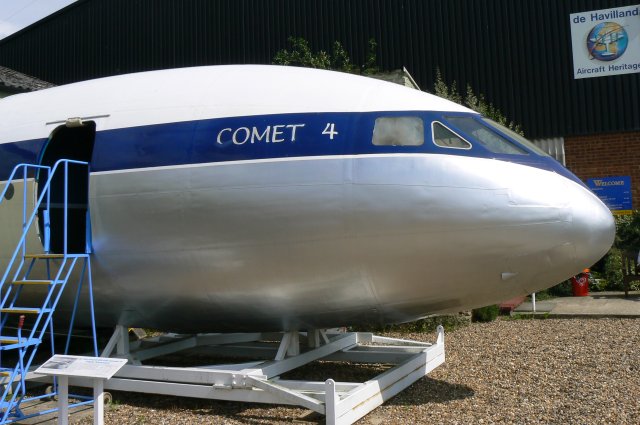
![]()
![]()
![]()
![]()
Not much vision out of the cockpit windows!
![]()
![]()
![]()
![]()
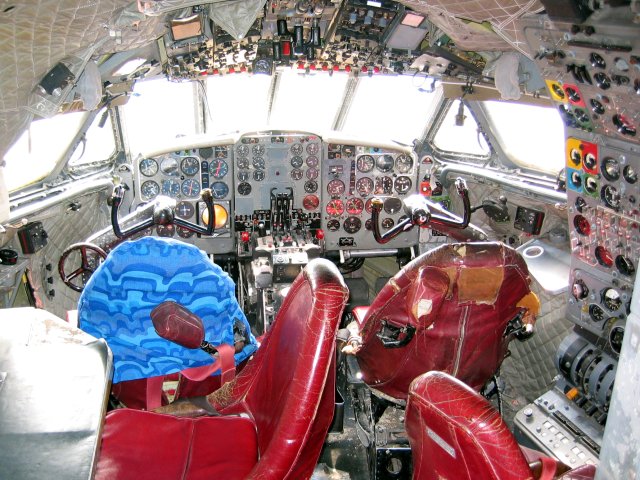
![]()
![]()
![]()
![]()
You can climb inside the simulator, indeed, if you’re feeling agile you can sit in the pilot’s seat.
There’s an illustrated history of the de Haviland company inside the first building. Although I had associated de Haviland as an aircraft company I didn’t know that they also built aircraft engines, both piston and jets. They designed the rocket motors for the Blue Streak missile. Hanging on a wall is a blade from one of the propellers of the massive hovercraft that provided a passenger service across the English Channel. de Haviland’s propeller company manufactured those.
On one wall hangs photographs of every type of aircraft designed by the de Haviland company. After the relative commercial failure of the Comet the de Haviland company was purchased by Hawker Siddley and eventually became part of British Aerospace. However, the de Haviland designs lived on. I didn’t know that the Hawker Siddley Trident was actually designed by de Havilands. So was the BAE 146 which was in production until 2001 and is still widely used. The 146 is the de Haviland type number, the 146th and last aircraft design by the company.
The main aircraft hanger holds examples of many types of aircraft built by de Haviland. Pride of place of course goes to their Mosquito. There’s also a number of the Moth series of aircraft used by pioneering aviatrix Amy Johnson.
When we visited a Sea Venom was under restoration in one corner of the hanger. It had been stripped back to its plywood shell. It’s amazing to think of a wooden jet aircraft being thumped down onto the deck of an aircraft carrier!
![]()
![]()
![]()
![]()
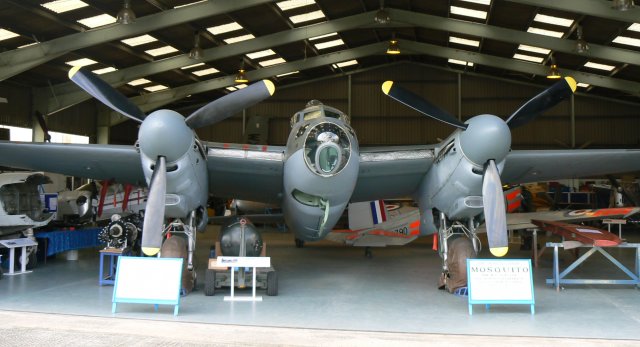
![]()
![]()
![]()
![]()
The de Haviland Mosquito. At the time of its introduction this bomber was faster than the Luftwaffe fighters that opposed it
Rather tucked away around a corner is another hanger that holds the first prototype Mosquito. It’s impressive that this aircraft has survived. It was undergoing a thorough restoration so it had no engines and looked a bit shabby. I’m sure that once it is restored it will look much better.
More aircraft sit outside the main hanger. Most aircraft had steps so you could look into their cockpit. One of the larger items is the forward fuselage of a Trident. You can go inside this and sit in the passenger seats but the cockpit is closed off.
![]()
![]()
![]()
![]()
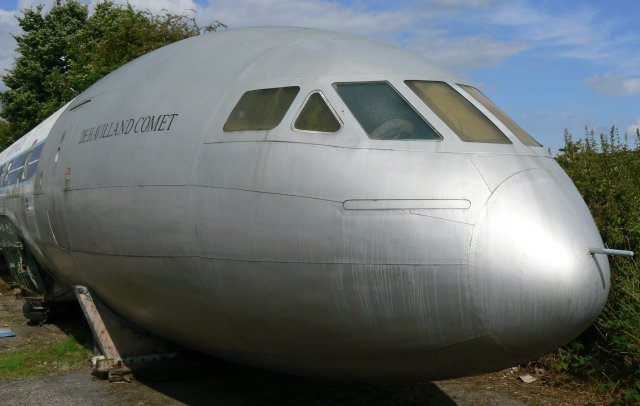
![]()
![]()
![]()
![]()
The fuselage of a Comet 1. You can just see the disastrously square windows. It would be good to see this aircraft restored and the interior open for visitors.
![]()
![]()
![]()
![]()
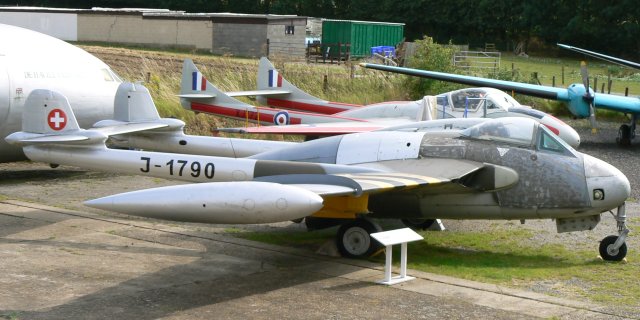
![]()
![]()
![]()
![]()
A RAF Vampire in the background with a Swiss Air Force Venom in front. The Venom, designed in the late 1940’s, was flown by the Swiss until 1983!
The de Havilland museum was a good afternoon out; well worth visiting.